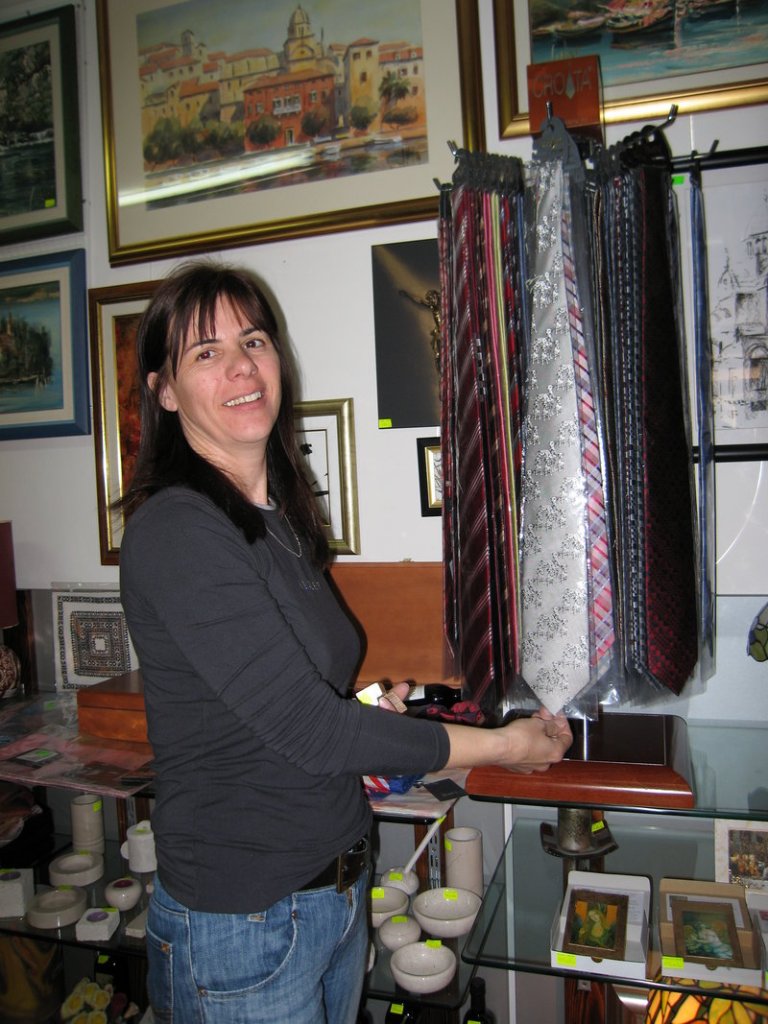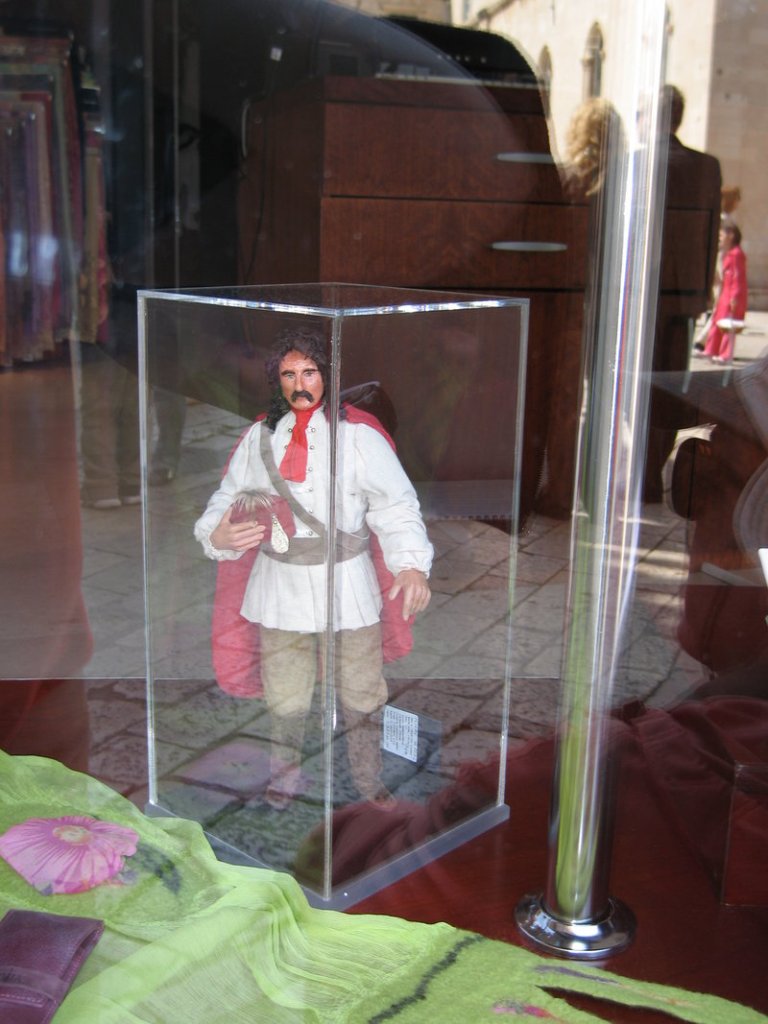Gentlemen, hate wearing a necktie? Blame Croatia. But, if you think an outfit isn’t complete without a tie, then give Croatia a round of applause. Why? Because Croatia is the birthplace of the modern necktie.
And as I learned on a recent trip there, the people of Croatia want you to be aware of this.
Turns out, the tale of the tie is nothing less than a saga of war and romance, of French kings and English kings, of dashing soldiers and even more dashing fashionistas. It would make a terrific movie script.
Here’s the history in a nutshell: The necktie evolved from a type of scarf worn by Croatian soldiers in the early 17th century. According to Croatian folk tradition, before a soldier set off for war, his girlfriend or wife would bestow upon him a narrow scarf to wear around his neck to remind him of her love.
Around 1635, France hired thousands of scarf-wearing Croatian mercenaries to help out with the Thirty Years’ War (1618-1648). 1650, French king Louis XIV caught sight of these jaunty neckerchiefs, fell for them and started wearing one himself. Voila, a new fashion accessory was born. The French called the scarf “a la croate,” meaning worn “in the Croatian way.” The term soon evolved into the word “cravat,” a word that’s remained a synonym for neckwear to this day.
Meanwhile, King Charles II of England had been in exile in France during this time. He, too, became much charmed by the Croatian scarf. So, when he was allowed to return home, he scurried back to England with his cravats. And from there, the fashion took off around the world.
Sure, various kinds of neckwear can be found much father back in time, reaching back to the ancient Egyptians, Chinese and Romans. But according to most sources, the necktie as we know it today originated in Croatia.
While I only recently learned the history of the necktie, every Croatian man, woman and child has the tale memorized. And they’re proud of their country’s contribution to worldwide culture. The Croatian National Tourist Office’s website devotes a section to the necktie.
Surprisingly though, it’s not easy to find a scarf or necktie that’s made in Croatia. Most scarves I saw in Croatia were made in India. However, a local woman told me that a chain of boutiques called Croata was the place for Croatian-made ties and scarves.
She was right. Moreover, Marijana Janjic, a spokesperson for the Croatian National Tourist Office in New York, told me by e-mail, “Croata brand boutiques are the most prestigious sellers of Croatian necktie.”
My first encounter with a Croata boutique was in the town of Zadar, a place film director Alfred Hitchcock claimed had the world’s best sunsets. Thing is, a great sunset kept me from reaching that Croata shop until just moments before it was to close. But mere minutes inside told me this company produced beautiful wares.
My next chance came at the Croata shop in the city of Split. This shop was much smaller, housed in a stone structure only a short stroll from the palace of Roman Emperor Diocletian, the city’s most famous landmark.
You don’t even need to read the sign to know you’ve come to the right shop: The door sports a bronze handle in the shape of a necktie.
Inside, the place is a kaleidoscope: colorful silk ties and scarves compete to catch your eye. But which one to choose? I asked the young salesclerk which scarf is most like the one worn by the early Croatian soldiers. She pointed to a small red neckerchief, in silk. Then, she handed me a Croata postcard that showed a drawing of a 17th-century Croatian soldier, wearing a red scarf.
The Croata company takes neckties seriously, and company co-founder, Mr. Marijan Busic, is determined to tell the world that neckties originated in Croatia. To that end, in 1997, he set up Academia Cravatica, a nonprofit institute for the study of the necktie, based in Croatia’s capital of Zagreb. For his efforts, he was honored in 2000 by the Croatian National Tourist Board for his work “to promote [the] cravat as a Croatian invention.”
As for me, there was no question as to what souvenirs to bring home.
Susan Farlow is a freelance writer who lives in Orono.
Send questions/comments to the editors.




Success. Please wait for the page to reload. If the page does not reload within 5 seconds, please refresh the page.
Enter your email and password to access comments.
Hi, to comment on stories you must . This profile is in addition to your subscription and website login.
Already have a commenting profile? .
Invalid username/password.
Please check your email to confirm and complete your registration.
Only subscribers are eligible to post comments. Please subscribe or login first for digital access. Here’s why.
Use the form below to reset your password. When you've submitted your account email, we will send an email with a reset code.